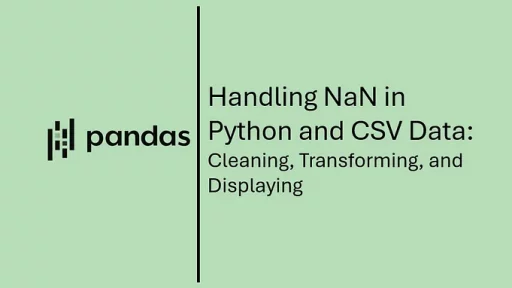Jose Crespo, PhD, published a medium article titled “A Programming Language Will Decide the USA-China Tech Wars” on November 28, 2024. In this piece, he argues that no programming language is as lethal in this tech war as C/C++. He emphasizes that CPUs and GPUs are just the warm-up, with System on Chip (SoC) hegemony being the real endgame.
System on Chip (SoC) hegemony refers to the dominance of SoCs in the tech ecosystem, where a single chip integrates multiple essential components of a computing system. This dominance arises from their efficiency, performance, and ability to consolidate functions like processing, memory, networking, and specialized accelerators (e.g., AI, graphics) into a compact, power-efficient package. Here’s why it can be seen as an “endgame”:
Key Features of SoC Hegemony:
- Integration of Functions: SoCs replace traditional multi-chip setups by embedding all key components, reducing complexity and improving efficiency.
- Optimization for Specific Use Cases: SoCs can be custom-designed for specific applications like smartphones, IoT devices, or high-performance servers, achieving optimal performance per watt.
- Power Efficiency: By integrating components on a single die, SoCs reduce power consumption, a critical factor for mobile and edge devices.
- Cost-Effectiveness: Consolidation leads to lower manufacturing and operational costs, as fewer components are needed.
Why SoC Hegemony Is the “Endgame”:
- Control and Innovation: Companies that design SoCs (e.g., Apple, Qualcomm, NVIDIA) control the pace of innovation and set industry standards, potentially leaving traditional component suppliers (e.g., discrete CPU or GPU makers) behind.
- Vertical Integration: Firms with proprietary SoC designs (like Apple’s M-series chips) have tighter integration between hardware and software, resulting in unparalleled performance and user experience. This further locks users into their ecosystems.
- Dominance in Emerging Fields: SoCs are becoming central in AI, machine learning, IoT, and 5G, which are pivotal to the future of technology.
- Barriers to Entry: Designing and manufacturing advanced SoCs require significant investment, expertise, and infrastructure (e.g., TSMC’s 3nm fabs), creating high barriers to entry and ensuring dominance by a few key players.
- Geopolitical Implications: With SoC supply chains heavily concentrated in regions like Taiwan, China, and the U.S., control over SoC technology has become a strategic national priority, influencing global power dynamics.
Potential Downsides of SoC Hegemony:
- Reduced Competition: Fewer players may lead to monopolistic behavior and stifle innovation.
- Supply Chain Risks: Centralized manufacturing facilities (e.g., TSMC) pose risks in case of disruptions.
- Lock-in Effects: Proprietary SoC ecosystems can limit interoperability and consumer choice.
It’s worth noting that Python is not directly involved in the core design or development of SoCs but still plays an important complementary role in the broader tech landscape of the USA-China tech competition — the tech race. Consider the recent news of DeepSeek…
In this race Python’s role is profound because it and its ecosystem are well adapted to interpret, analyze and learn from data.
AI and Machine Learning: Python’s Main Stage
Artificial Intelligence (AI) and Machine Learning (ML) are at the center of the USA-China tech conflict. Both nations recognize that whoever leads in AI will wield influence not just in technology but across military, economic, and social domains.
Python dominates this space. Libraries like TensorFlow, PyTorch, and Scikit-learn are written in lower-level languages for performance, yet they rely on Python for usability. Researchers and engineers use Python to design neural networks, process massive datasets, and deploy AI models. In this sense, Python is a critical enabler, connecting groundbreaking research with practical applications.
China, with its centralized approach to technology development, has invested heavily in AI. Python plays a significant role in its national AI strategy. Open-source Python libraries allow Chinese engineers to build on global innovation while tailoring solutions for local needs. The modularity of Python accelerates these efforts, enabling quick adaptation of global AI breakthroughs.
In the US, Python thrives in Silicon Valley and academic institutions. The flexibility of the language allows American tech companies to iterate rapidly, maintaining a competitive edge. Universities also produce a steady pipeline of Python-trained AI experts, bolstering the country’s leadership in cutting-edge research.
Data Handling: The Hidden Weapon
Data is often referred to as the “new oil.” Extracting insights from data is vital for decisions in geopolitics, cybersecurity, and commerce. Python excels in this domain through libraries like Pandas and NumPy, which simplify data manipulation and numerical computations. These tools form the foundation of any modern data analysis pipeline.
In cybersecurity, Python scripts automate tasks like vulnerability scanning and malware analysis. The language’s simplicity ensures these scripts are widely adopted by security teams, whether they’re protecting infrastructure or countering threats. Python helps both nations remain agile in an era where cyber threats evolve quickly.
China’s Belt and Road Initiative (BRI) has created a vast network of international partnerships, generating enormous amounts of data. Python tools enable Chinese analysts to monitor trade patterns, predict supply chain disruptions, and even analyze sentiment across social media platforms in partner countries. These insights help refine diplomatic and economic strategies.
The United States, leveraging Python, processes data across diverse sectors. From NASA to Wall Street, Python-powered analytics influence decisions. Hedge funds use Python to predict market trends, while defense agencies utilize Python scripts for analyzing satellite imagery or tracking missile launches.
Bridging Hardware and Software
Low-level languages like C and C++ dominate discussions about hardware design. Yet, these languages rarely interact directly with end-users or researchers. Python serves as the bridge. Through wrappers and APIs, Python gives developers access to the power of hardware-optimized libraries without requiring expertise in their underlying complexities.
Take NVIDIA’s CUDA, a parallel computing platform for GPUs. It powers everything from gaming to AI model training. The CUDA ecosystem provides Python bindings, allowing developers to harness GPU capabilities with minimal effort. In practice, this reduces development time and lowers the barrier for experimentation.
China has made massive strides in designing its own chips, notably through companies like Huawei and SMIC. These chips often require tailored software solutions, where Python’s adaptability becomes an asset. Engineers can develop Python interfaces to optimize chip performance for specific applications, speeding up deployment.
In the United States, startups and tech giants alike depend on Python for testing and simulating hardware. Python frameworks like PyTest and PySerial are used in everything from IoT devices to aerospace engineering. The iterative nature of Python programming complements hardware innovation, ensuring faster prototyping cycles.
Democratization of Innovation
One of Python’s unique contributions lies in its ability to democratize innovation. The language is easy to learn, yet powerful enough to tackle advanced problems. This balance has fostered a global community of developers who contribute to open-source Python libraries.
In the USA-China tech rivalry, this community represents a double-edged sword. On one hand, it accelerates progress by pooling intellectual resources across borders. On the other hand, it blurs lines of control, allowing both nations to access similar technological foundations.
China’s strategy often involves leveraging open-source tools to enhance state-sponsored projects. Engineers modify Python libraries to suit their goals, whether for AI surveillance systems or smart city technologies. Python’s open nature facilitates this, enabling rapid customization.
Meanwhile, the United States benefits from Python’s role in startups. The language lowers entry barriers, encouraging innovation in small teams. Many of these startups focus on niche areas, from quantum computing to synthetic biology. The versatility of Python allows them to compete with larger players, ensuring a dynamic tech ecosystem.
Education and Workforce Development
Another critical role Python plays is in training the workforce. Universities, bootcamps, and online courses across both nations prioritize Python as a first language. This is no accident. Python’s syntax mirrors English, making it accessible to beginners while offering depth for advanced users.
China has launched ambitious programs to educate millions of students in programming, with Python as a core component. The government recognizes the importance of building a tech-savvy workforce capable of advancing national priorities. Python’s simplicity makes it ideal for introducing concepts in AI, data science, and automation to a broad audience.
In the United States, Python is similarly entrenched in education. The language is the default choice in introductory programming courses at major universities. This head start ensures American students are well-versed in technologies that define modern industries.
The Future of Python in the Tech Wars
As the USA-China tech rivalry evolves, Python’s role will expand. It will continue to drive innovation in AI, serve as a critical tool for data analysis, and act as the interface between complex hardware and end-user applications. However, challenges remain.
One concern is dependency. Both nations rely heavily on Python’s open-source ecosystem, which could become a vulnerability. Supply chain attacks targeting Python libraries have already demonstrated the risks of compromised dependencies. In a high-stakes competition, securing these pipelines will be crucial.
Another challenge is performance. Python is not a compiled language, making it slower than competitors like C++ or Rust. While this is mitigated by its ability to integrate with faster languages, the gap remains a consideration in performance-critical applications.
Despite these challenges, Python’s ubiquity ensures its role in the tech wars is far from over. It may not decide the outcome singlehandedly, but it will shape the battlefield. Whether in AI labs, data centers, or classrooms, Python remains a silent force influencing global power dynamics.
Thank you for reading this article. I hope you found it helpful and informative. If you have any questions, or if you would like to suggest new Python code examples or topics for future tutorials, please feel free to reach out. Your feedback and suggestions are always welcome!
Happy coding!
Py-Core.com Python Programming.
You can also find this article at Medium.com


